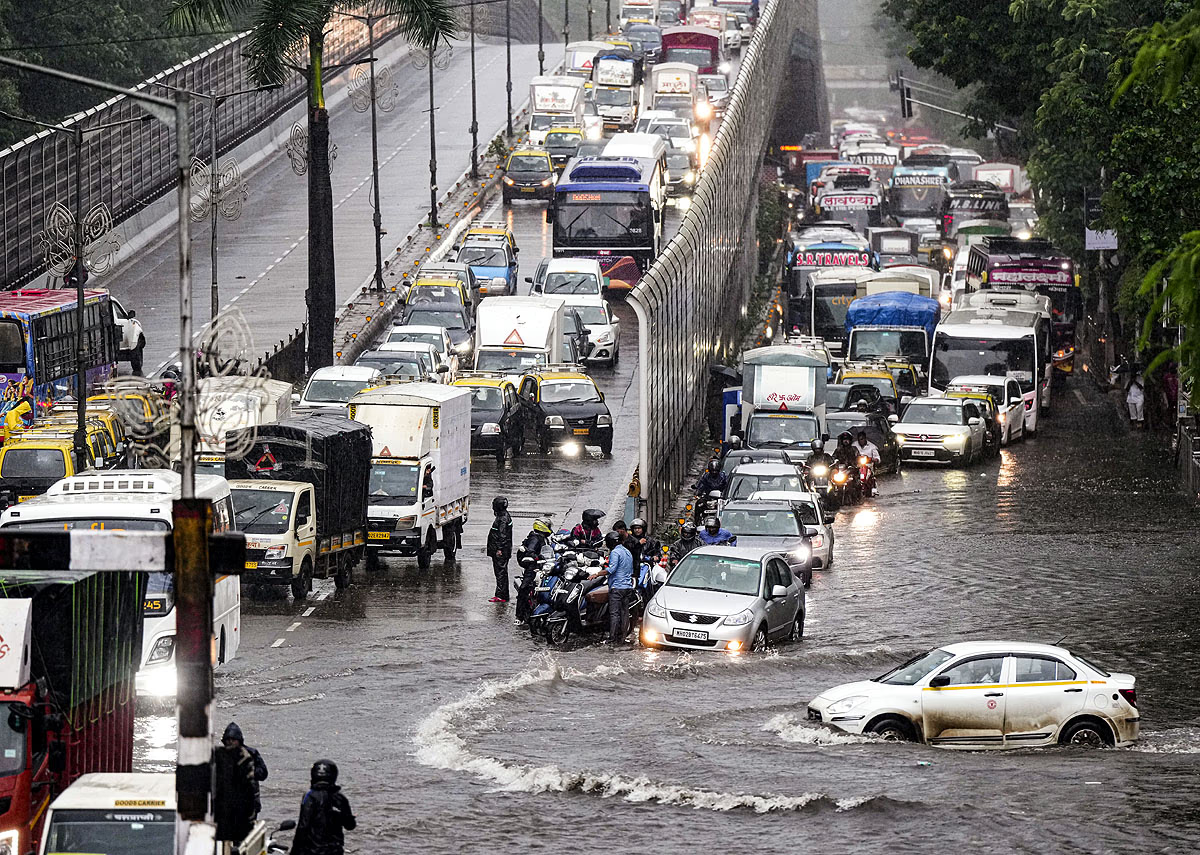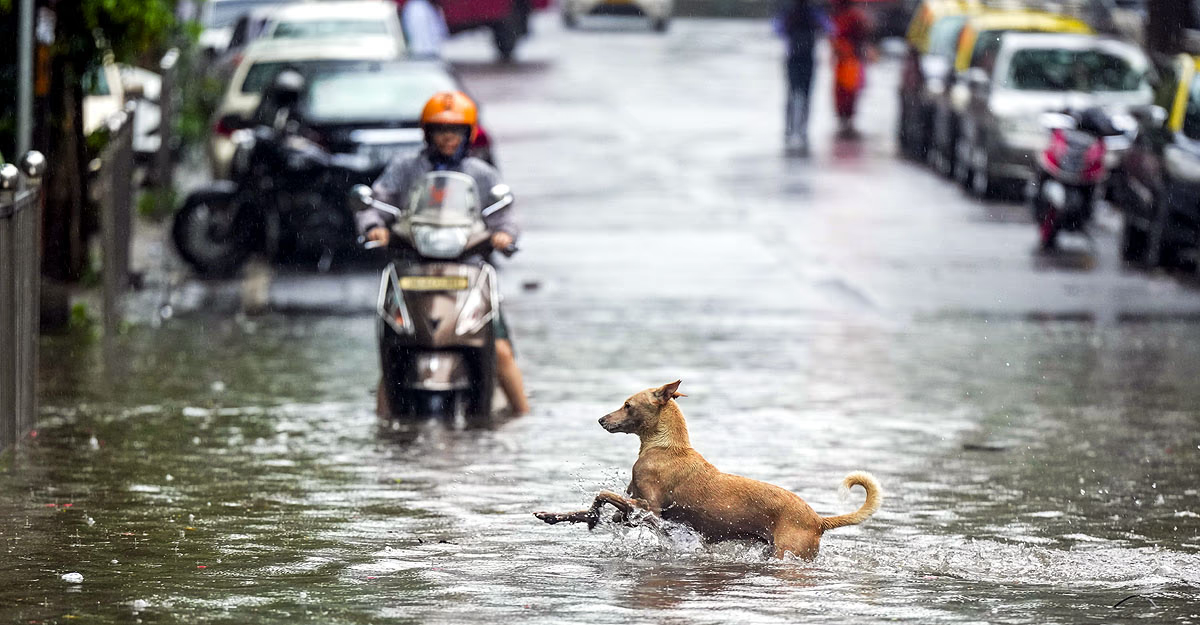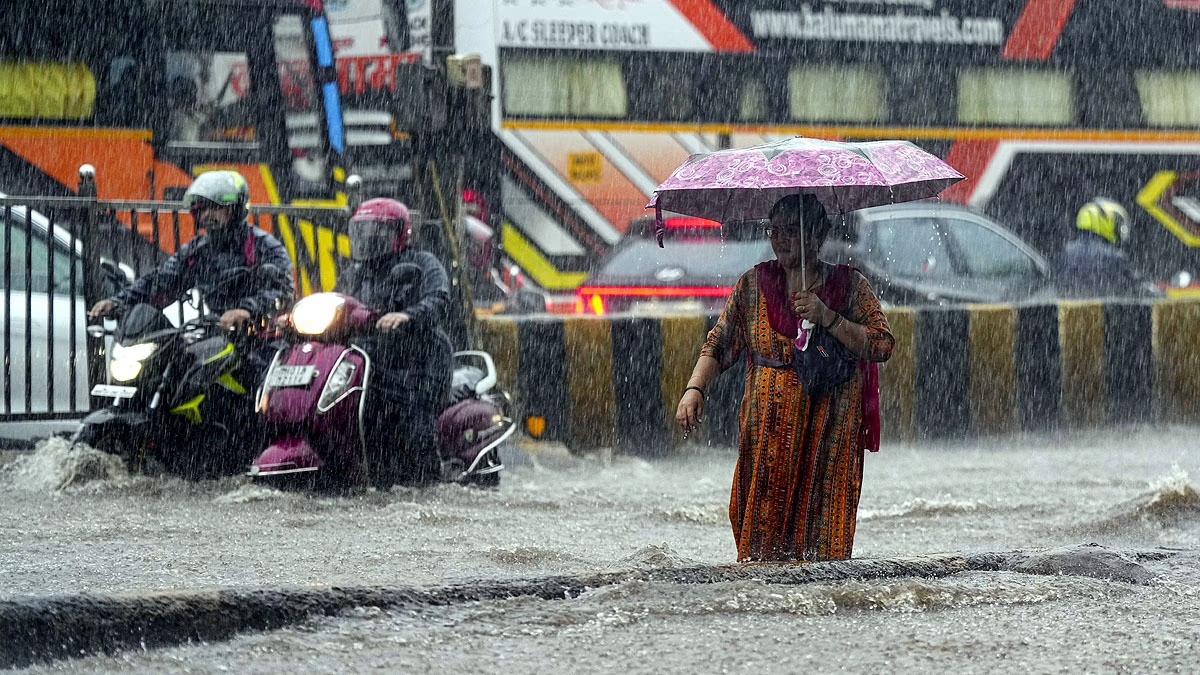Early Monsoon Arrival in 2025: This year, the monsoon reached Kerala, Tamil Nadu, Karnataka, and Maharashtra two weeks earlier than usual.
Simultaneous Onset Across Massive Areas: On May 24, the monsoon swept across a large expanse from Kerala to Maharashtra, a phenomenon unseen for 54 years.
Climate and Anthropogenic Factors: Global warming, reduced snowfall, and increased moisture contributed to the early monsoon.
Key Climate Drivers: The Madden-Julian Oscillation (MJO), neutral El Niño, and neutral Indian Ocean Dipole (IOD) bolstered the monsoon's advance.
Potential Slowdowns: Early June's mid-latitude dry winds might decelerate monsoon progress.
In 2025, the southwest monsoon arrived in Kerala, Tamil Nadu, Karnataka, and Maharashtra around May 24, about two weeks earlier than the usual date of June 1. Notably, on May 24, the monsoon covered an extensive region from Kerala to Maharashtra, including cities like Bengaluru.
This occurrence mirrors an event from 54 years ago when the monsoon hit parts of Karnataka and Maharashtra simultaneously in 1971. But what exactly caused this early and broad onset? Is it a ripple effect of global warming, or is there more to the story?
Read More:
Is it Unusual?
An early monsoon covering a vast region isn't unheard of, yet it's not highly common either. A similar pattern occurred in 1971 when the monsoon simultaneously covered significant parts of Karnataka and Maharashtra. This year, the monsoon is expected to remain active until June 2, propelling further into Maharashtra and the eastern regions.
However, the monsoon's progress could slow down at the start of June due to mid-latitude dry air masses disrupting the moist monsoon winds. Such interruptions have become more prevalent in recent years, contributing to increased monsoon irregularities.

Source: aajtak
Factors Accelerating the Monsoon
The monsoon's arrival and progress are governed by an intricate web of factors. These include...
Climate factors (natural) and anthropogenic factors (human-induced changes like global warming). According to the Indian Meteorological Department (IMD), global warming has a limited impact on vast systems like the monsoon, yet it cannot be entirely dismissed.
Read More:
Impact of Global Warming and Climate Change
Reduced Snowfall in Eurasia and the Himalayas:
Global warming resulted in 15% less snowfall in Eurasia and the Himalayas from January to March 2025, compared to the 1990-2020 average. Reduced snowfall lowers surface albedo, leading to warmer surfaces. This heat in May accelerated monsoon winds.
Increased Atmospheric Moisture:
Global warming adds 6-8% more moisture to the atmosphere with every 1° C temperature rise. In 2025, global temperatures are 1.2° C above pre-industrial levels. High may moisture in the Arabian Sea and Bay of Bengal encouraged cloud formation and the early onset of the monsoon. A cyclonic system on the Karnataka-Goa coast further intensified this.

Source: aajtak
Strengthened Somali Jet and Cross-Equatorial Flow:
The Somali Jet consists of strong low-level winds originating from Mauritius and Madagascar, carrying moisture across the Arabian Sea to India's west coast (Kerala, Karnataka, Goa, Maharashtra). In May 2025, the jet was unusually strong, an influence that could partly be attributed to global warming.
Key Climate Influencers
Madden-Julian Oscillation (MJO):
The MJO is a 30-60 day tropical weather cycle that affects monsoon active and dry phases, consisting of 8 stages where stages 2 and 3 support monsoon activity. In May 2025, the MJO was in stage-3, promoting cloud formation and rain across southern India. By May 25, it advanced to stage-4, enhancing moisture from the Indian Ocean, primarily contributing to the monsoon's early and broad onset.
Read More:
El Niño Impact:
El Niño represents warm ocean surface temperatures affecting the southwest monsoon negatively. In May 2025, the El Niño-Southern Oscillation (ENSO) remained neutral, indicating the absence of both El Niño and La Niña. This neutrality was favorable for the monsoon.
Indian Ocean Dipole (IOD):
IOD reflects the temperature difference between the western (warm) and eastern (cool) parts of the Indian Ocean. A positive IOD enhances the monsoon, while a negative one weakens it. In 2025, the IOD is neutral, but a slightly positive IOD might form in August-September, potentially boosting the monsoon further.
Obstacles in Monsoon Progress
According to IMD, though the monsoon has started early and strongly, its progress might slow down in early June. This is due to dry winds hindering the moist monsoon currents. Recently, such impediments have become more frequent—for instance, Cyclone Remal in 2024 stopped the monsoon in the Bay of Bengal for 19 days.
Expert Opinions
Secretary, Ministry of Earth Sciences, M. Ravichandran:
We use five factors for monsoon prediction, including Eurasian snowfall. Less snowfall has a 33% positive impact on the monsoon, though precise causes aren't always clear.
IMD's DG, Mrutyunjay Mohapatra:
The early monsoon onset is a result of factors like MJO in stages 3 and 4, neutral ENSO, and a robust Somali Jet. However, dry winds in June might slow its advance.




